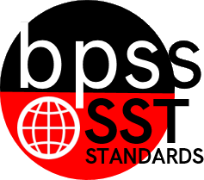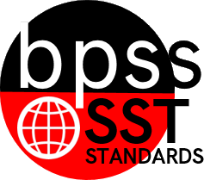1st Grade Social Studies (Archived)
 BPS District Social Studies Standards Book
BPS District Social Studies Standards Book
SST-01 "I can ... statements"
1st Grade Social Studies
2nd Grade Social Studies
4th Grade Social Studies
5th Grade Social Studies
7th Grade Social Studies
8th Grade Social Studies
| Standard 2: History |
SST-01.2
Narrative for the Important Historical EventsAt the first grade level, students develop thinking and decision-making skills through active participation as members of their school and neighborhood. They learn to identify events and changes taking place in the school and local community and classify events as taking place “today,” “yesterday,” and “long ago.” In the history standards, students identify continuity and change in the different environments around them, including school and neighborhood communities, and identify individuals, events and symbols that are important to our country.Identify people and events observed in national celebrations and holidays. Example: Celebrations and holidays, such as Thanksgiving; Reverend Martin Luther King, Jr. Day; Presidents’ Day; Independence Day; Arbor Day; and Veterans’ Day Calculation Method for StandardsStandards are larger groups of related benchmarks. The Standard Grade is a calculation of all the related benchmarks. Click on the benchmark name below each Standard to access the learning targets and proficiency rubrics for each standard's related benchmarks. | |
SST-01.2.02
Student Learning Targets:Knowledge Targets
Reasoning Targets
Skills (Performance) Targets
Product Targets
Proficiency Scale
ResourcesWebsites Vocabulary | ||||||||||||||||||||||||||||||||||||||||||||
SST-01.2.03
Student Learning Targets:Knowledge Targets
Proficiency Rubric
ResourcesWebsites Helping Your Child With Social Studies Vocabulary
| ||||||||||||||||||||||||||||||||||||||||
SST-01.2.04
Student Learning Targets:Knowledge Targets
Reasoning Targets
Skills (Performance) Targets
Product Targets
Proficiency Scale
ResourcesWebsites Vocabulary | ||||||||||||||||||||||||||||||||||||||||||||


 Standard 2:
Standard 2: